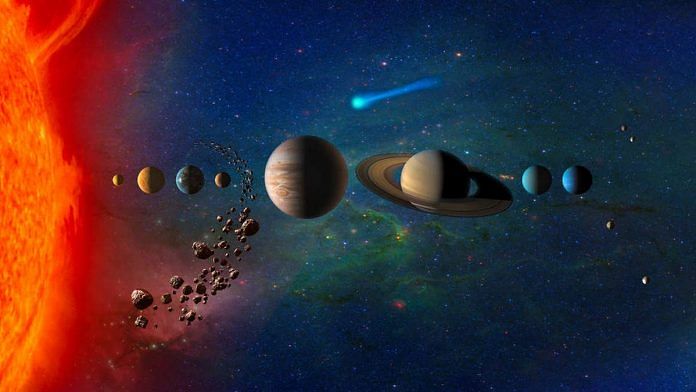New Delhi: Scientists have confirmed the existence of an Earth-sized planet around the closest star to our solar system, Proxima Centauri. The planet named Proxima b has a mass equivalent of 1.17 earths and orbits its star every 11.2 days. It is located in the habitable zone of the star.
Proxima b was first detected four years ago, when scientists measured a low disturbance in the star’s speed, suggesting the presence of a companion cosmic body. The star Proxima Centauri is 4.2 light-years from the sun. Proxima b possibly has surface temperatures similar to that of the earth, raising hopes that the planet could harbour life. However, there is time before it can be established whether or not the planet can host life. More on Independent.
Ozone layer depletion triggered mass extinction 359 mn years ago
A mass extinction event that wiped out much of the planet’s plant and freshwater aquatic life 359 million years ago was caused because the ozone layer broke down briefly, a study has found.
Apart from the mass extinction event caused by an asteroid hitting Earth 66 million years ago — which killed the dinosaurs — three other such events have been thought to be a result of large-scale volcanic eruptions that destabilised the Earth’s atmospheres and oceans.
Scientists have now found that high levels of UV radiation led to the collapse of forest ecosystems and killed off many species of fish and tetrapods 359 million years ago. This damaging burst of UV radiation occurred as part of one of the earth’s climate cycles, rather than being caused by a huge volcanic eruption.
According to the researchers, the findings have profound implications today as the climate crisis has led to the thinning of the ozone layer that shields the earth from damaging ultraviolet (UV) radiation. More on Science.
Environmental changes due to climate crisis stunting trees
Ongoing environmental changes as a result of global heating and climate crisis are transforming forests worldwide, causing the trees to grow shorter and live less longer, an analysis of 150 previous studies has shown.
Increased heat and carbon dioxide levels have made events like wildfires, droughts and other natural disasters more frequent and severe. These changes are likely to have a huge impact, such as further accelerating climate change and threatening the planet’s biodiversity.
Researchers from the University of Birmingham also found that the globally averaged tree size has declined over the last century and is likely to continue declining due to continuing environmental changes. More on The Guardian.
Remains of ‘paleo-nursery’ that bred great white sharks found
Scientists have discovered the fossilised remains of a nursery area of the great white shark in several sites along the Pacific coast of Chile and Peru, dating back to over two to five million years ago. The great white shark is on the brink of extinction, due to its very slow growth and late reproduction with only few offspring — along with disturbances due to human activities.
Young white sharks take birth in designated ‘nurseries’, where they can be protected from other predators until they grow into adults. Better understanding and protecting such nurseries could be key in preventing the extinction of the marine predator.
This paleo-nursery was active at a time when the climate was much warmer than today, so researchers are considering it to be a window into how global warming may be affecting present day nurseries. More on New Atlas.




Very Informative.
Wonderful
I don’t know it is right or not ???